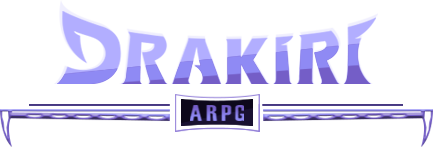Species
Drakiri
Subtypes:
Kainu,
Sprite,
Mystic,
Komakha,
Primal,
Q'lin,
Nightmare,
Kelpie,
Dracus,
Mutt,
Kainu-Sprite,
Mystic-Kainu,
Sprite-Mystic,
Sprite-Komakha,
Sprite-Q'lin,
Sprite-Primal,
Sprite-Nightmare,
Sprite-Dracus,
Sprite-Kelpie,
Mystic-Komakha,
Mystic-Q'lin,
Mystic-Primal,
Mystic-Nightmare,
Mystic-Dracus,
Mystic-Kelpie,
Komakha-Q'lin,
Komakha-Primal,
Komakha-Nightmare,
Komakha-Dracus,
Komakha-Kelpie,
Q'lin-Primal,
Q'lin-Nightmare,
Q'lin-Dracus,
Q'lin-Kelpie,
Primal-Nightmare,
Primal-Dracus,
Primal-Kelpie,
Nightmare-Dracus,
Nightmare-Kelpie,
Dracus-Kelpie,
Zarkanta,
Primal-Zarkanta,
Kainu-Zarkanta,
Kainu-Q'lin,
Kainu-Primal,
Kainu-Komakha,
Kainu-Dracus,
Kainu-Nightmare,
Kainu-Kelpie,
Sprite-Zarkanta,
Mystic-Zarkanta,
Q'lin-Zarkanta,
Komakha-Zarkanta,
Zarkanta-Dracus,
Zarkanta-Nightmare,
Zarkanta-Kelpie,
Riftborn
BODY AND DIET:
- Drakiri are magical Qilin/Kirin like creatures who can learn to shapeshift, taking an anthropromorphic or humanoid form with proper training. Drakiri are natural workers of magic, using their horns to focus their magic and manipulate objects since they do not have hands in their natural forms.
- Drakiri always have three-toed hooves with a single dewclaw both in the rear hoof and the front hoof. Their hooves are incredibly agile and they have a good grip, allowing them to leap, bound and climb like a mountain goat. Drakiri are tough and hardy, able to thrive in any environment though forests are their favorite biome to live in.
- In body, they are like a combination of prehistoric horse, deer and dragon. Drakiri are omnivorous, enjoying both meat and plant materials. They need more meat than plants, and a Drakiri can not be healthy on a strictly plant based diet. They are fond of fruit and sweet things. They cannot digest grass or leaves. The plant matter in their diet is similar to the vegetables and fruits humans eat. Many prefer their food to be cooked, as it tastes better, has a better texture, and is easier to digest thus giving the Drakiri more energy for other things.
SHAPED FORM:
- Drakiri are capable of shape shifting, going into an anthropomorphic form or a more humanoid appearance. When in a humanoid form, they usually still have hooves and markings on their skin, as well as the ears, tails, and horns. Their build is often Satyr like, with the legs and tail furred and the upper body skin, with the face not quite human. They often retain their scales.
SPEECH AND NATURE:
- Drakiri are noble, proud and fierce, but not warlike. They are very vain, but not arrogant. They are fully capable of speech and language. Many live in civilizations, forming towns, cities, villages, and settlements.
SCALE CARE
- They are usually natural colors with brightly colored scales that shine in the light. Drakiri pride themselves for their beautiful scales and flowing manes and tails.
SOCIAL STRUCTURE:
- Drakiri are not monogamous by nature, though some can choose to be so. They will usually choose a mate with the most vibrant scales and unique markings during their breeding season. Drakiri breed in midsummer, and give birth next spring. Due to their breeding season being midsummer, it is often known as Midsummer Madness due to the way Drakiri prance and show off all of their best Qualities.
- There is little to no sexual dimorphism among Drakiri aside from their scent and their respective bits. Male and female Drakiri see each other as equals, as they are the same size, same color, same intelligence, and same level of strength. Males tend to be fiercer and prouder, while females are known more for being clever and calculating.
REPRODUCTION, YOUNG AND GROWTH
- Being dragonlike mammals, Drakiri give live birth to tiny Draklings, that are more like kittens or puppies in their developement rather than foal like. Older and stronger Drakiri can often carry a larger litter.
- The entire herd cares for the newborn Draklings in a communal incubation room fueled by their magic. It keeps all the babies warm and safe. Drakiri are capable of agriculture and can collectively use their magic to build beautiful structures by guiding the way they want trees to grow. The branches and leaves create a nice shelter for them without hurting the tree.
- Unlike horses and deer, their young, called Draklings, are unable to stand at birth. They are tiny, pudgy, fuzzy and helpless. Their eyes are closed and they have soft plating on their body where their scales will grow in and a a tiny nub where their horn will grow in as they get older. Within a couple weeks of birth, their eyes open and after a couple months, they are able to get up and move around. Their movement is reminiscent of a little kitten.
- A Drakiri reaches full maturity at around eighteen years old, aging very similarly to humans. In behavior, Draklings are almost like little kittens or puppies, bounding about and playing and following their parents everywhere. They are also incredibly curious, and will often get themselves into all sorts of trouble if not watched closely.
Companion
A listing for official Drakiri companions.
2 results found.

